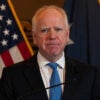Last week, Arizona leaped to the front of the education choice pack.
Already a leader in school choice, being the first state to create education savings accounts back in 2011, Arizona Gov. Doug Ducey has now signed into law an expansion of the program, transforming it into a near-universal option for students across the state.
A near-universal education savings account policy in Arizona will make it the first in the nation to enact and implement such an approach. Nevada had previously enacted such a proposal, but the program’s implementation has been delayed due to an ongoing funding dispute.
No such barriers exist in the Grand Canyon State: Arizona’s near-universal education savings account policy is on firm financial and legal ground, and with five years of experience running their existing policy, state administrators have gained critical experience in implementation and program management.
Education savings accounts represent a breakthrough in public education financing. Instead of sending funding directly to district schools, and then assigning children to those schools based on where their parents live, parents receive 90 percent of what the state would have spent on their child in their district school, with funds being deposited directly into a parent-controlled account.
In Arizona currently, that is typically around $5,300 for a student, annually, and closer to $14,000 annually for a child with special needs.
Once the state per-pupil funds are deposited into a child’s account, the family can then use those funds for any education-related service, product, or provider. Parents can roll over unused funds from year to year in anticipation of future education-related expenses.
This new expansion made Arizona’s education savings account option a near-universal program. Enrollment, while open to all families, will initially be limited to a small proportion of public school enrollment—approximately 5,500 students per year. That number can, however, be expanded moving forward.
The near-universal education savings account option is also being phased in over a four-year period, with participation open to any student in either first, sixth, or ninth grade during the 2017-2018 school year.
The following year, eligibility will expand to students in second, seventh, or 10th grade, and in the following year to students in kindergarten through third grade and sixth through 11th grade. By the 2020-2021 school year, all K-12 school children will be eligible.
That four-year phase-in comes as an add-on to existing eligibility. The program is already open to several categories of children, including:
- Children with special needs.
- Children in D- or F-rated schools.
- Children in active-duty military families.
- Children adopted from Arizona’s foster care system.
- Incoming kindergarten students who met the other eligibility requirements.
- Children of a military parent killed in the line of duty.
- Siblings of eligible students.
- Preschool children with special needs.
- Native American children living on tribal lands in Arizona.
Families in Arizona had already been using the education savings account option to tailor a customized educational experience for their children.
As Jonathan Butcher and I have found, approximately 30 percent of Arizona families use their accounts to craft an à la carte educational experience for their children, paying private school tuition, hiring private tutors, paying for special education services and therapies, purchasing textbooks, and much more.
Arizona is a leader in #edreform. Thanks to @dougducey and all the Arizona leaders working to advance the cause this session. https://t.co/tdvCAOP4US
— Jeb Bush (@JebBush) April 6, 2017
These accounts have already been changing lives for eligible families in Arizona—particularly families of children with special needs.
Take Holland Hines and her son EJ.
As Hines explained to EdChoice, after EJ was diagnosed with autism, the family spent several years fighting with their district school in Michigan to get services that were appropriate for him.
On the cusp of engaging in legal proceedings, Hines moved to Arizona and eventually began participating in the education savings account option.
She now uses her account to create a completely customized learning experience for EJ: They pay for part-time private schooling, private tutoring, therapy, and music lessons.
“My son isn’t under a desk anymore holding his head and rocking back and forth,” Hines said. “He’s happy. He’s open to new experiences. He tries new things. He’s learning. He’s making progress. He’s playing instruments. He’s playing sports. He’s participating in social groups. He has just blossomed.”
Now, this option is open to all students in the state of Arizona, enabling them to match their own share of education funds to the tailored learning options that will help them blossom.
Other states may soon follow Arizona’s lead.
In states like Arkansas, Wyoming, Oklahoma, New Hampshire, and Missouri, education savings accounts are currently being given serious consideration. And for good reason: As more and more states adopt this model, growing evidence suggests it’s working well for participating families.
In addition, new data suggest that families in rural areas also stand to benefit. As the Brookings Institution recently found, more than 82 percent of families in America live within 5 miles of a private school, and 69 percent of families in rural areas are within 10 miles of a private school.
Today, Arizona, Florida, Mississippi, Tennessee, and Nevada have created education savings accounts, and Arizona and Nevada have demonstrated it is possible to enact a near-universal program. In the coming months, more states are likely to be added to that tally.
The education savings account waters have been tested, and are indeed warm. It’s time for other states to come on in and embrace the future of school choice.































